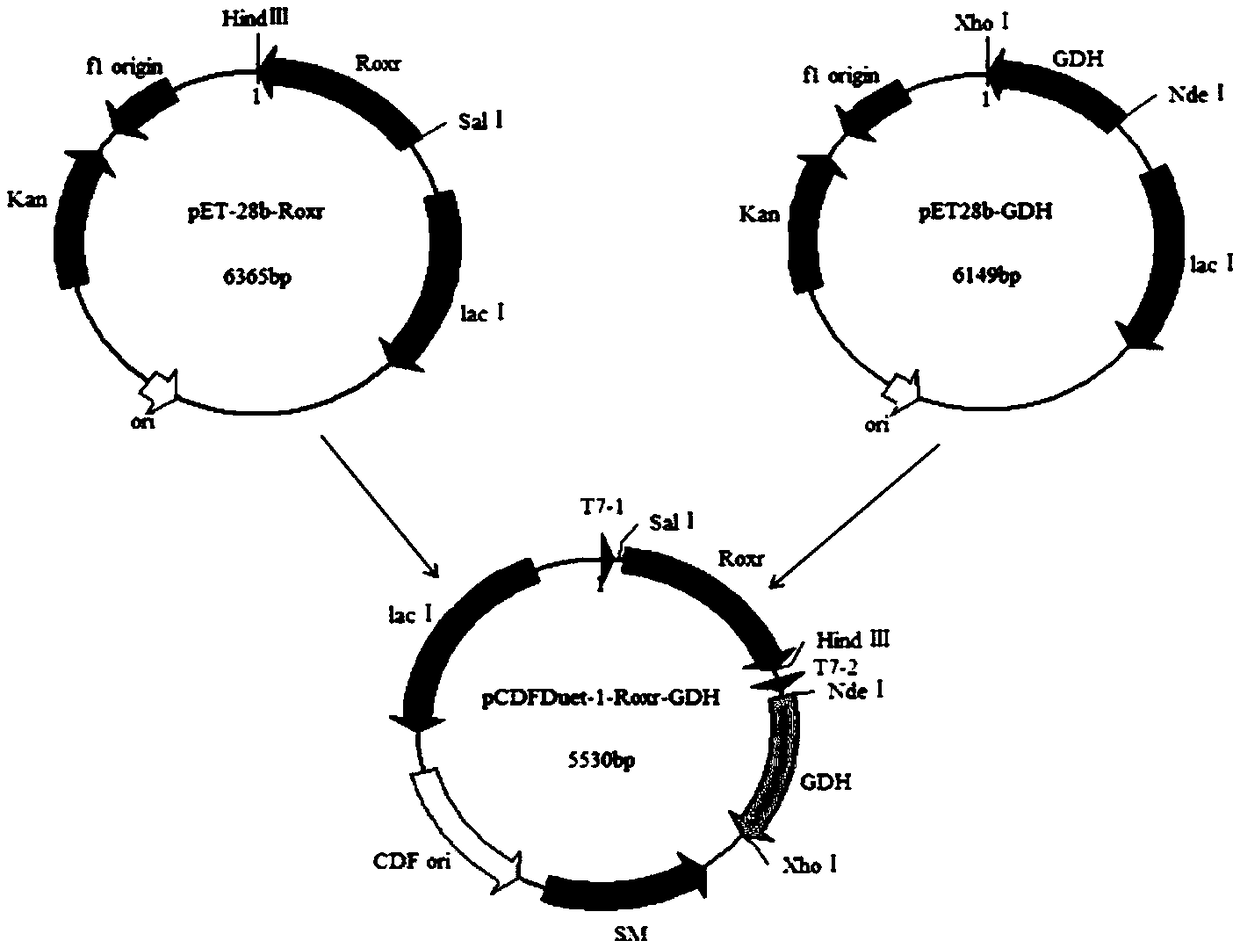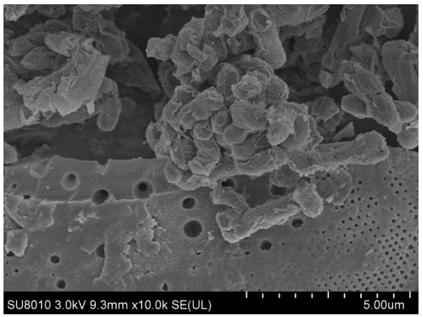Recombinant escherichia coli immobilized cell and application to production of xylitol from xylose mother liquor
A technology for recombinant Escherichia coli and immobilized cells, applied in the direction of immobilized on or in inorganic carriers, based on microorganisms, bacteria, etc., can solve the problems of low space-time yield, complex process, high cost, etc., and achieve simple production methods , Simplify the purification process and increase the effect of added value
- Summary
- Abstract
- Description
- Claims
- Application Information
AI Technical Summary
Problems solved by technology
Method used
Image
Examples
Embodiment 1
[0027] The component analysis of embodiment 1 xylose mother liquor
[0028] Each component in the xylose mother liquor is detected and analyzed by high performance liquid chromatography. The detection method of xylitol and its by-products generated by catalyzing the xylose mother liquor is the same as the detection method of the xylose mother liquor. The detection conditions of the high performance liquid chromatography are as follows: The system is Waters 2414, RID detector. The detection conditions are: the chromatographic column is BioRad Aminex HPX-87H (300×7.8mm), the column temperature is 60°C, and the mobile phase is 5mM H 2 SO 4 solution, the flow rate is 0.6ml / min, and the injection volume is 20μL.
[0029] Sample processing method: dilute the sample to about 5g / L, in 1.2×10 4 Centrifuge at rpm for 5 min, retain the supernatant and pass through a 0.22 μm filter membrane for liquid phase analysis.
[0030]This method effectively detects the main components in the x...
Embodiment 2
[0033] Example 2 Construction of recombinant Escherichia coli E.coli BL21(DE3) / pCDFDuet-1-XR-GDH
[0034] Recombinant Escherichia coli construction process: the nucleotide sequence is xylose reductase gene XR shown in SEQ ID NO.1 to construct the expression plasmid pET-28b(+)-XR, and the nucleotide sequence is glucose shown in SEQ ID NO.2 The dehydrogenase gene GDH was constructed to express the plasmid pET-28b(+)-GDH. Plasmids pET-28b(+)-XR, pET-28b(+)-GDH and empty plasmid pCDFDuet-1 were respectively extracted by plasmid extraction kit. The pET-28b(+)-GDH plasmid and the empty plasmid pCDFDuet-1 were double-digested with restriction endonucleases NdeI and XhoI respectively, and the GDH gene fragment was recovered by agarose gel electrophoresis and gel recovery kit. The GDH gene fragment was ligated with the double digestion product of the empty plasmid pCDFDuet-1 to obtain the plasmid pCDFDuet-1-GDH. The pET-28b(+)-XR plasmid and the plasmid pCDFDuet-1-GDH were double-dig...
Embodiment 3E
[0036] Example 3E. coli BL21(DE3) / pCDFDuet-1-XR-GDH whole cell immobilization
[0037] 1. Preparation of immobilized cells
[0038] The present invention relates to a fixed selective cross-linking method for whole cells of recombinant genetically engineered bacteria.
[0039] Take by weighing 2g of the wet thalli cells that embodiment 2 obtains in 20mL, the pH is in the phosphate buffered saline solution of 8.5, add the activated carbon that final concentration 6g / L handles and stir at room temperature (activated carbon processing method: granular activated carbon crosses 40 mesh sieves, immerses In 1M hydrochloric acid, stir at 50°C for 1 hour. Suction filter, rinse with distilled water until the filtrate is neutral, put it in an oven to dry, and set aside), then add polyethyleneimine with a final volume concentration of 5% and stir evenly, and then add the final volume Concentration of 50% glutaraldehyde, cross-linking reaction at room temperature for 2 hours. After suctio...
PUM
| Property | Measurement | Unit |
|---|---|---|
| particle size (mesh) | aaaaa | aaaaa |
Abstract
Description
Claims
Application Information
 Login to View More
Login to View More - R&D
- Intellectual Property
- Life Sciences
- Materials
- Tech Scout
- Unparalleled Data Quality
- Higher Quality Content
- 60% Fewer Hallucinations
Browse by: Latest US Patents, China's latest patents, Technical Efficacy Thesaurus, Application Domain, Technology Topic, Popular Technical Reports.
© 2025 PatSnap. All rights reserved.Legal|Privacy policy|Modern Slavery Act Transparency Statement|Sitemap|About US| Contact US: help@patsnap.com



